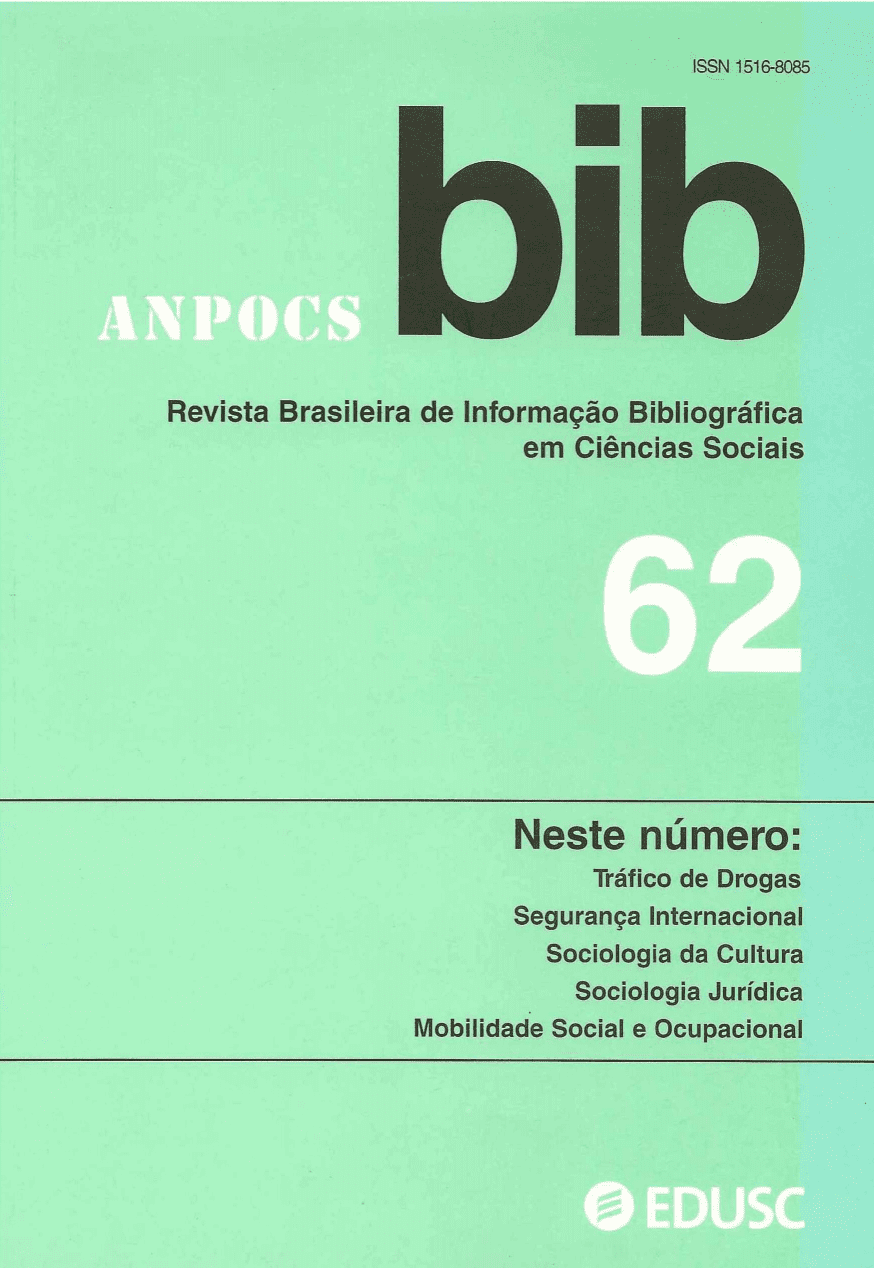Les études de mobilité sociale et occupationnelle
passé, présent et défis pour le futur
Mots-clés :
Mobilité sociale, Mobilité occupationnelleRésumé
L’article a pour objectif de présenter les principales perspectives à propos de la m obilité sociale et occupationnelle présentes dans la tradition sociologique. Il cherche, en outre, à identifier lés défis contemporains dans ce domaine d’études.
Téléchargements
Références
BLAU, Peter & DUNGAN, Otis. (1967), The American occupational structure. New 'York, J.Wiley.
BOUDON , Raymond. (1981), A desigualdade das oportunidades. Brasilia, Editora da Universidade de Brasilia.
CUIN, Charles-Henry. (1993), Les sociologues et la m obilitésociale. Paris, PUE
ERIKSON, Robert & GOLDTHORPE, John. (1992), The constant flux: a study of class mobility in industrial societies. Oxford, Claredon Press.
FEATHERMAN, David & HAUSER, Robert. (1976), “Sexual inequalities and socioeconomic achievement in the U.S., 1962-1973”. American Sociological Review, 41.
FEATHERMAN, David; HAUSER, Robert; JONES, E (1975), “Assumptions of social mobility research in the U.S.: the case of occupational status”. Social Sciences Research, 4.
GOLDTHORPE, John. (1980), Social mobility and the. class structure in Britain. Oxford, Claredon Press.
_________. (2000), On Sociology — numbers, narratives and the integration of research and theory. Oxford, Oxford University Press.
GOLDTHORPE, John &c McKNIGHT, Abigail. (2006), “The economics basis of social class”, in Stephen Morgan et al. (eds.), M obility and inequality - frontiers of research in sociologyand economics, Stanfords Stanford University Press.
GRUSKY, David. Social stratification — class, race & gender in sociologicalperspective. Colorado, Wesrview Press.
GRUSKY, David e WEEDEN, Kim. (2006), “Does the sociological approach to studying social mobility have future?", in Stephen Morgan et al. (eds.), Mobility and inequality —frontiers of research in sociology and economics, Stanford, Stanford University Press.
HALLER, Archibald. (2000), “A estrutura de estratificação do Brasil: um programa.de trinta e cinco anos de pesquisa”. Revista Teoria e Sociedade, Belo Horizonte, UFMG.
LIEBERSON, STANLEY. (1994), “Understanding ascriptive stratification: some issues and principles”, in David Grusky (org.), Social stratification: class, race and gender in sociological perspective. Oxford, Westview Press,
LIP-SET, Seymour & BENDIX, R. (1959), Social mobility in industrial society. Berkeley, UCLA Press.
MERLLIÉ, D. & PRÉVÔT, J. (1997), La mobilité sociale. Paris, Editions La Découverte.
MILLER, Robert & HAYES, Bernadette. (1990), “Gender and intergeracional mobility”, in Géoff Payne e Pamela Abbot (eds.), The social mobility of women, Londres, The Falmer Press.
MORGAN, Stephen. (2006), “Past themes and future prospects for research on social and economic mobility”, in Stephen Morgan et al. (eds.), M obility a?id inequality - frontiers ofresearch in sociology and economics, Stanford, Stanford University Press.
MORGAN, Stephen; GRUSKY, David; FIELDS, Gary (eds.). (2006), M obility and inequality - frontiers of research in sociology and economics. Stanford, Stanford University Press.
SILVA, Nelson do Valle. (1979), “As duas faces da mobilidade”. Dados, 21.
_______ . (1999), “Mobilidade social”, in Sérgio Miceli (org.), O que 1er na ciência social brasileira (1970-1995). Sâo Paulo, Editora Sumaré/Anpocs.
TREIMAN, Donald & GANZENBOOM, Harry. (1998), The fourth generation of comparative stratification research. Meeting of Research Council of the International Sociological Association, Canada.
WRIGHT, Erik. (1997), Class counts. Los Angeles, UCLA Press.





